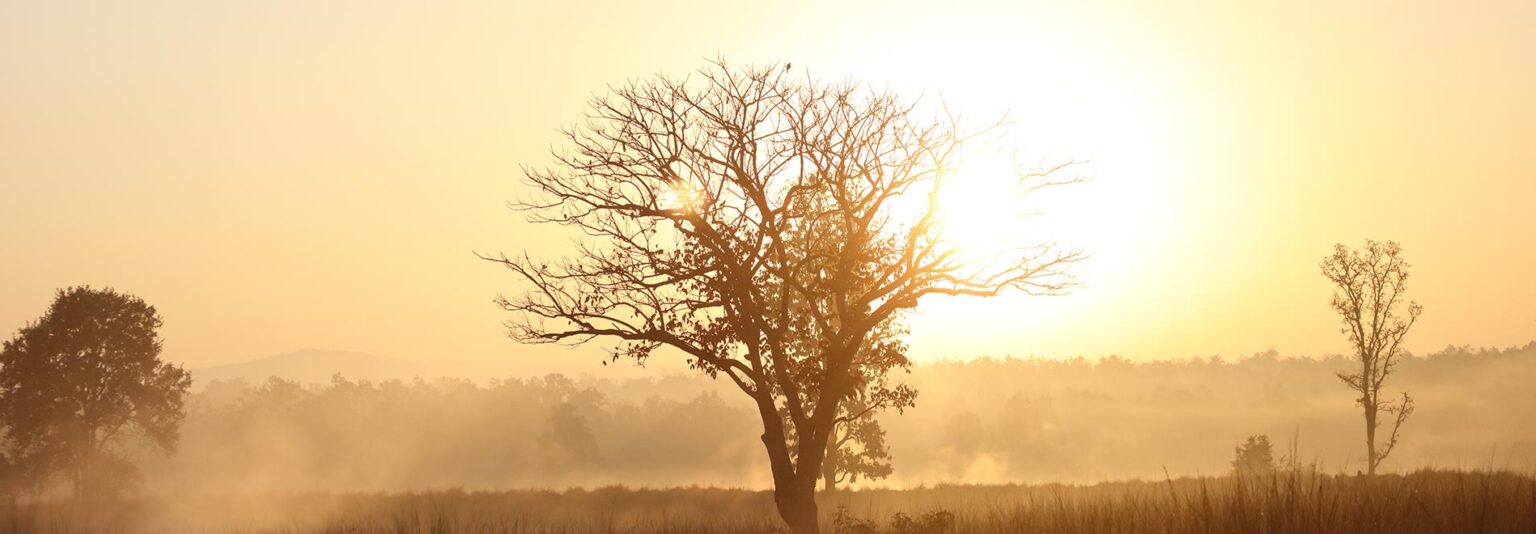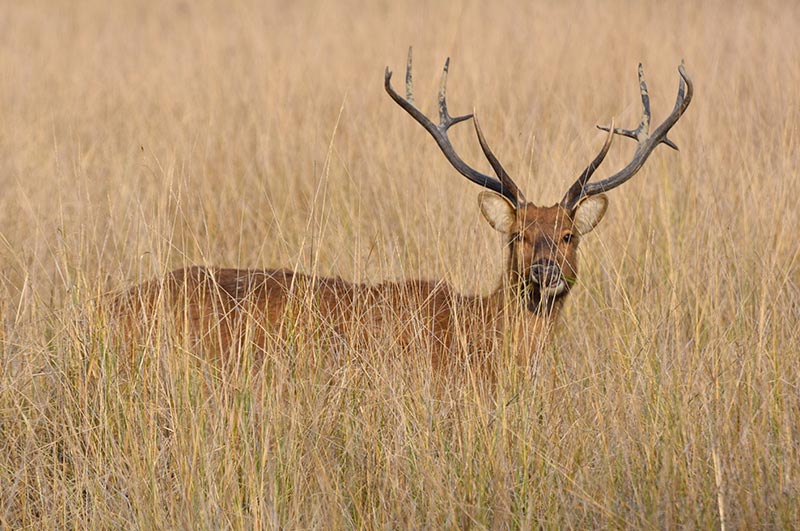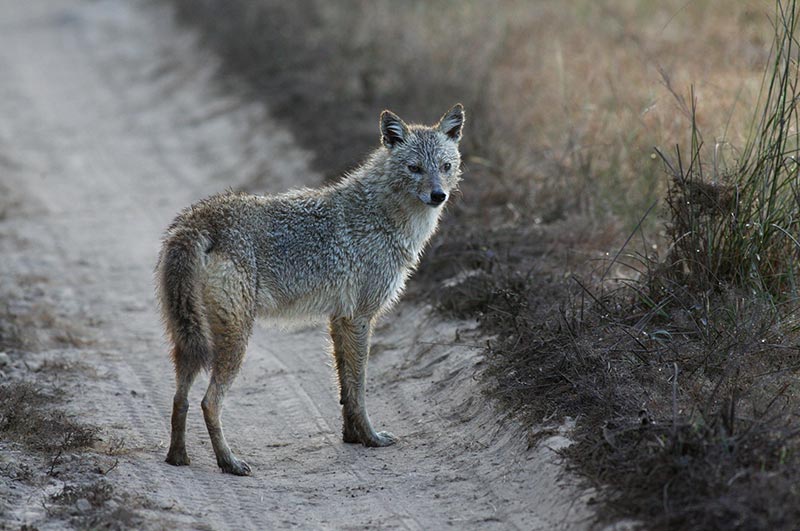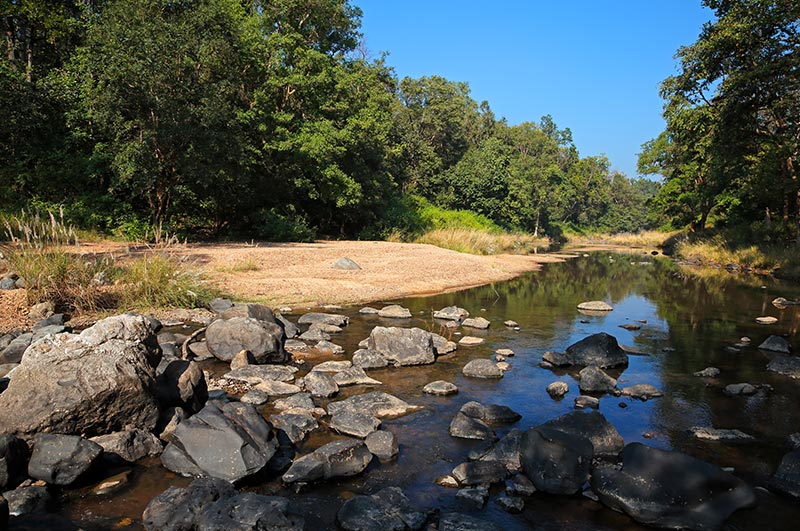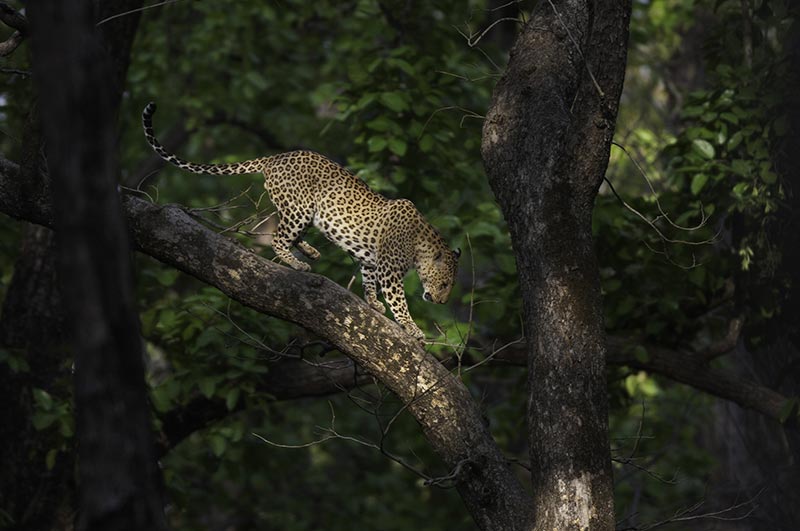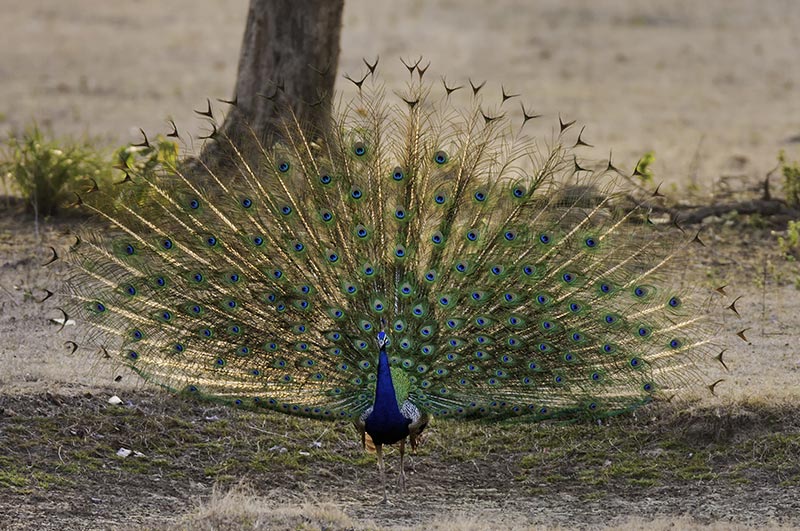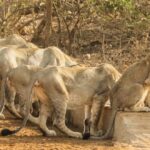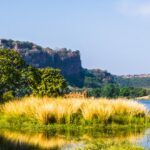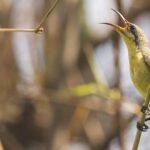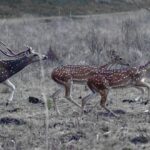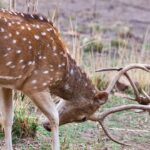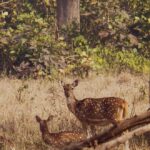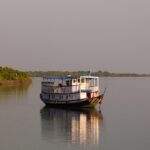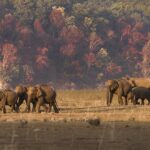Unveiling the Enchanting Embrace of Kanha National Park: Madhya Pradesh’s Jewel
Nestled in the heart of India, Madhya Pradesh boasts a treasure trove of natural beauty. From mesmerizing waterfalls to sprawling forests, the state is a haven for wildlife enthusiasts. And amongst its many gems shines Kanha National Park, a captivating wilderness that inspired Rudyard Kipling’s timeless tale of Mowgli and his jungle friends.
Kanha National Park, the largest in Madhya Pradesh, encompasses a sprawling 1,940 sq km (including both buffer and core zones). Established in 1955, the park boasts a landscape sculpted by nature’s hand. Lush green forests unfurl majestically, while ravines carve dramatic paths through the terrain. This captivating tapestry of nature has earned Kanha a coveted spot amongst India’s top 10 tourist destinations.
A Canvas Painted by Seasons: The Climate of Kanha National Park
Kanha National Park is blessed with a pleasant tropical climate. The park truly comes alive between November and March, offering visitors comfortable temperatures for exploration. Summers paint the landscape in vibrant hues, with temperatures ranging from a comfortable 23°C to a scorching 43°C. Winters bring a refreshing chill, blanketing the meadows in a mesmerizing frost. Temperatures typically hover between 10°C and 24°C during this season. The monsoon season arrives in June, bringing life-giving rain to the park until September. The annual average rainfall of 152 cm rejuvenates the vegetation, creating a verdant paradise.
Unlocking the Wonders: The Best Time to Visit Kanha National Park
Kanha National Park welcomes visitors from mid-October to the end of June. However, the peak tourist season falls between October and March. This period boasts lush greenery, invigorated by the monsoon rains, making it ideal for wildlife spotting and birdwatching, as migratory birds flock to the park during this time. The scorching summer months, while less crowded, offer prime opportunities for tiger sightings and capturing breathtaking photographs of these majestic predators.
A Sanctuary of Life: The Flora and Fauna of Kanha National Park
Kanha National Park serves as a haven for a diverse range of flora and fauna, including many endangered and threatened species. Over 200 flowering plants and 70 different tree species thrive within the park’s boundaries. Sal, Lendia, Saja, Tendu, and Palas are just a few examples of the vibrant trees that dominate the landscape. Additionally, a variety of climbers, grasses, and forbs flourish alongside the park’s many lakes and gorges, providing sustenance for migratory birds.
The park is a true wildlife wonderland, offering sightings of tigers, gaurs, bisons, chousinghas, nilgais, sloth bears, leopards, hyenas, jackals, foxes, pythons, porcupines, jungle cats, and a multitude of deer species, including chital, sambar, barasingha, barking deer, blackbucks, and mouse deer.
Birdwatchers will delight in the vibrant chorus created by pintails, storks, pond herons, teals, egrets, peafowls, spurfowls, jungle fowls, partridges, ring doves, peacocks, spotted parakeets, rock pigeons, green pigeons, quails, cuckoos, shrikes, kingfishers, bee-eaters, flycatchers, hoopoes, rollers, drongos, warblers, finches, woodpeckers, orioles, and owls. The park even boasts a fascinating array of fish and other aquatic life.
The Barasingha, once on the brink of extinction, has made a remarkable comeback thanks to the tireless efforts of forest officials and local communities. Their rutting calls now echo through the open grasslands, adding another layer of enchantment to the park’s soundscape.
A Home Away from Home: Accommodation Options Around Kanha National Park
Kanha National Park offers a variety of comfortable and luxurious accommodation options to suit all preferences. From charming resorts to havens of tranquility, these havens ensure a memorable stay amidst the embrace of nature. Here’s a glimpse of some popular choices:
- Tiger Land Resort
- Tuli Tiger Resort
- Wild Chalet Resort
- Kipling Camp
- Krishna Jungle Resort
- Mogli Resort
- Baghira Log Huts Kisli
- Celebration Van Vilas
- Chitvan Lodge
- Shergarh Tented Camp
Reaching Your Wildlife Paradise: How to Get to Kanha National Park
Madhya Pradesh, aptly nicknamed “Hindustan ka Dil” (Heart of India), boasts excellent transportation facilities. Reaching Kanha National Park is a breeze, with options available for all travel preferences.
- By air – The nearest airport is in Jabalpur, about 160kms away. From the airport, one can easily avail the public transport like public or private buses or even taxis.
- By rail – Gondia is the nearest railway head which is about 145kms away. Kanha National Park is only 3 hrs drive away from Gondia.
- By road – Kanha National Park is well-connected by roadways. One can enjoy the affordable state-run buses to visit Kanha. The bus services connect Kanha to major cities in Maharashtra and Chhattisgarh.
Unveiling the Adventures of Kanha National Park: Safaris, Cycling, and More
Kanha National Park isn’t just a visual feast for nature lovers; it’s an adventure waiting to be unraveled. Here, amidst the verdant embrace of the park, you’ll have the chance to explore the diverse flora and fauna through a variety of exciting activities.
1) Embark on an Elephant Safari:
For a truly unique and safe way to explore the hidden corners of Kanha National Park, especially the dense bamboo forests and towering Sal trees inaccessible by jeep, consider an elephant safari. These gentle giants offer a comfortable vantage point to observe the park’s inhabitants as you traverse the landscape. While there might not be a dedicated “tiger show” as mentioned earlier, keep your eyes peeled – you never know what magnificent creature you might encounter on your elephant safari adventure.
2) . Explore with a Jeep Safari:
For a more classic wildlife viewing experience, a jeep safari is an excellent choice. Navigate the labyrinthine network of dense forests alongside a knowledgeable wildlife expert who can guide you towards the best spots for spotting tigers, gaurs, barasinghas, and a plethora of other captivating creatures. Jeep safaris typically operate during two designated time slots: from sunrise until 11:00 AM and again during the late afternoon leading up to sunset. This ensures you maximize your chances of witnessing wildlife activity during their peak periods.
3) Experience the Thrill of Cycling:
Kanha National Park goes beyond the typical safari experience. If you’re looking for an alternative way to explore the park’s scenic beauty and encounter its wildlife, consider a cycling expedition. Upon request, the park’s naturalists can arrange cycling tours for interested visitors. Imagine pedaling along designated trails, the lush greenery flanking you on both sides, while keeping an eye out for colorful birds flitting through the trees or catching a glimpse of a majestic deer grazing in a nearby meadow.
Immerse Yourself in Nature with Walking Trails:
For a more intimate and immersive experience, consider exploring the park’s walking trails. These gentle pathways meander through the heart of Kanha, offering a chance to witness the park’s vibrant ecosystem at a leisurely pace. As you walk, keep your eyes peeled for a dazzling array of birds, from peacocks with their flamboyant displays to shy jungle fowl camouflaged amongst the foliage. You might even stumble upon serene lakes reflecting the azure sky or catch a glimpse of the Banjaar River snaking its way through the landscape. Be sure to keep an eye out for the unique dwellings of the Gond tribe, adding a touch of cultural immersion to your nature walk. By incorporating these diverse activities into your Kanha National Park itinerary, you’ll create an unforgettable experience that goes beyond simply ticking off wildlife sightings. It’s a chance to truly connect with nature, appreciate the delicate balance of the ecosystem, and create memories that will last a lifetime.

